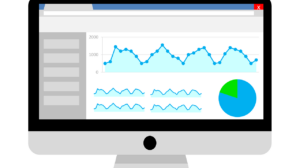Marketing is crucial to every business in today’s digital and competitive world. You need the right tools and strategies to stay ahead of the curve. If you don’t, you could risk letting your competitors take your customers and falling behind in your market. So use the following data when planning your marketing strategy to ensure success:
Market Size
When it comes to proper marketing with big data, you need to understand the market size you are looking at. For any given company, there is a market cap and if you do not know what this is, you might overinvest or ignore opportunities.
Use resources available cheaply and for free online that let you research how many potential customers you could have. Looking at your competitors is another way to find this information out. If your product or service is too expensive for a small market, then you need to know this ahead of time so you don’t waste the research dollars on rolling it out. It lets you decide how best to spend your time.
Keyword Searching
In addition to market size is the actual keyword search total. For your certain products and services, there will be a number of people actually searching for it in a month. This is available to see on Google’s Keyword Planner. You can see the estimated numbers of people looking for certain keywords around your brand and products.
Make sure that the numbers are big enough to justify an entry into a new market or continuing in an older market. If not, use keyword searching to find a new opportunity that your competitors have not uncovered yet. This could give you a crucial headstart on them.
A/B Testing
You should always be testing your marketing campaigns. If not, you are missing out on great data that can help you grow your business. One method of testing is called A/B testing.
This method of marketing testing involves using data collected from your visitors. When someone hits your site, it tags them and tracks them throughout their total visits, engagement, and conversions (like signups or purchases). This allows you to see how effective a certain campaign is. The higher the conversion rate the more you should invest in that particular marketing strategy. However, with A/B testing you gain other insights such as which headlines, images, and copy to use.
Sales
Big data lets you crunch a lot of numbers. However, before getting fancy, consider the basics. Look at your historic sales numbers. Which products and services are purchased the most? Before rolling out new projects, make sure you are getting the most profit you can out of your proven winners. Perhaps there is a way to enhance the value of a certain product, or to raise the prices and still maintain most of your customer base.
Demographics and Profiling
Your customers are all individuals. However, the one thing they have in common is that they purchased your products or services. If you collect enough marketing data, you can use it to decide how to plan your marketing goals in the future.
A great way to do this is through customer surveys that identify the age, income, gender, and occupation of your customer base. This allows you to see which combination of factors align with the best customers you have. For instance, perhaps the most profitable customers all come from a certain geographic region. That would mean you should double down on your marketing campaigns in those regions.
When it comes to marketing, data is becoming more important than ever. Companies that do not use big data are going to fall behind while those who do will see massive growth. Be sure to look at the data metrics above and put them into action in your business. That way you can enjoy more conversions and profits without as much time, effort, or energy in the process.





